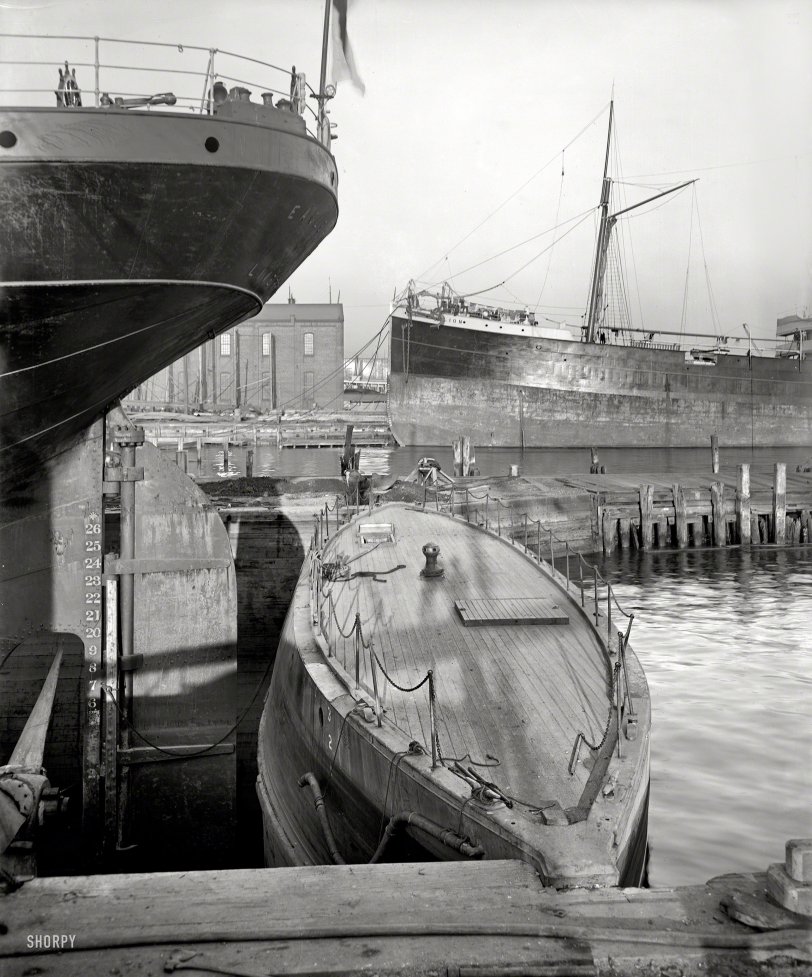


Framed or unframed, desk size to sofa size, printed by us in Arizona and Alabama since 2007. Explore now.
Shorpy is funded by you. Patreon contributors get an ad-free experience.
Learn more.

- Baldwin 62303
- Baldwin VO-1000
- Cold
- No expense spared
- Tough Guys
- Lost in Toyland
- And without gloves
- If I were a blindfolded time traveler
- Smoke Consumer Also Cooks
- Oh that stove!
- Possibly still there?
- What?!?
- $100 Reward
- Freeze Frame
- Texas Flyer wanted
- Just a Year Too Soon
- WWII -- Replacing men with women at the railroad crossing.
- Yes, Icing
- You kids drive me nuts!
- NOT An Easy Job
- I wonder
- Just add window boxes
- Icing Platform?
- Indiana Harbor Belt abides
- Freezing haze
- Corrections (for those who care)
- C&NW at Nelson
- Fallen Flags
- A dangerous job made worse
- Water Stop
Print Emporium
The Gate at Cramp's: 1900

Circa 1900. "The Gate at Cramp's dry dock, Philadelphia." 8x10 inch dry plate glass negative, Detroit Publishing Company. View full size.
History of Wm. Cramp & Sons
Charles Cramp, son of founder William, was an early reformer of Naval procurement. He enabled the shipyard to get bids on Naval vessels at realistic prices with incentives for exceeding specifications. Could use the man today on the F-35. Link here.
The Eagle Point (1900-1916)
The cargo ship whose stern is in the foreground is likely the Liverpool-based Eagle Point. That ship had good reason to be in dry dock in 1900. On one of its earliest voyages from London to Philadelphia, it had collided with, and sunk, another vessel (the Biela, also British-owned) in the fog off Nantucket on October 1, 1900. Both the British inquest, and the U.S. Court of Appeals for the Third Circuit, concluded that the Eagle Point had been steaming too fast for the conditions. It was ultimately captured, then sunk, by a German U-boat 70 in March 1916 when taking hay and oats to Cherbourg. Its passengers and crew (including one American) were left in lifeboats in what was alleged to be stormy weather, resulting in a written protest from the U.S. State Department to the German Government. The Germans replied that the supposed storm was a small swell, and that (given the location of the sinking in the sea lanes) the boats were especially likely to be found by other ships.
























On Shorpy:
Today’s Top 5